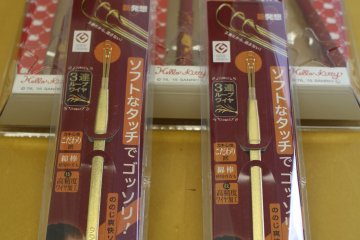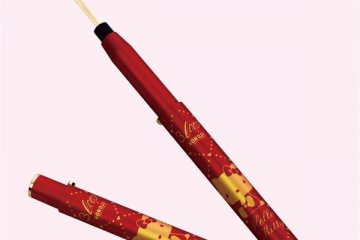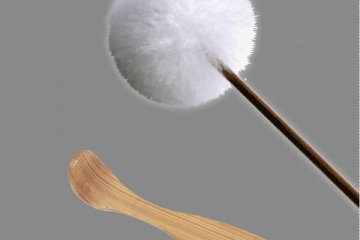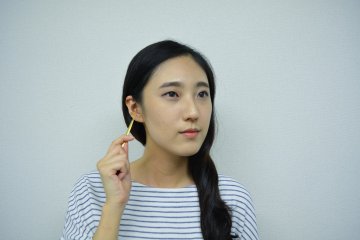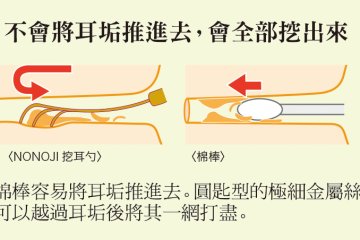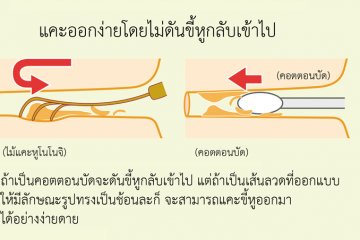Overview
Yet another difference between Japan and most western cultures is the hygienic practice of cleaning one’s ears. While in the west most people use cloth, cotton swabs or regular rinsing, the Japanese have a specific tool most people use called mimikaki (耳かき). Mimikaki may appear interesting to foreigners, but they can be both comfortable and relaxing.
Table of contents
Origins and culture of mimikaki

Ear cleaners have been around for over 1000 years in Europe and Asia both, but in Asia these were typically made of bamboo with a sharp point, curved upward for scraping. In Japan there is a strong cultural aspect of mimikaki that starts with the mother setting her children in her lap and regularly cleaning their ears. This type of nurturing creates an important physical bond between parent and child. There are even relaxation parlors in Japan where a customer can spend 30 minutes or an hour to have their ears cleaned by a woman dressed in kimono to relive these memories.
Varieties of mimikaki

There are several types of mimikaki available in Asia and some that recently been developed in Japan are quite high quality. A few of the more common types include:
- Bamboo: The original mimikaki in Asia has been in use for over 1,000 years if not much longer. Essentially a stick that has been smoothed out, these will eventually crack and scratch so will need to be replaced regularly. These can still be purchased today, but are being replaced by more modern types.
- Plastic: This type is essentially the same shape as the bamboo, but is slightly cheaper and will not crack as easily. These are the cheapest type for a reason and can still scratch the ear if not used carefully.
- Metal wire: In Japan mimikaki have continually evolved in shape from traditional scoop shape designs to the latest styles implementing multiple wire designs in cylinders or multiple prongs. With multiple shapes available, these mimikaki are now more of a cross over between a cleaning and massage good and can be quite enjoyable to use. The ends are designed to fit multiple ear shapes perfectly and allow for quick and gentle scraping. Metal wire mimikaki are safer to use than standard bamboo mimikaki as all of the edges are smooth and rounded.
There are now even more reasons to use metal mimikaki over other ear cleaning methods as the brand Nonoji (ののじ, http://www.nonoji.jp/) continues to release interesting types and designs of mimikaki. You can find these Nonoji mimikaki in many fashionable varieties including pocket size models, flashlights, favorite characters and more. The price can be around JPY 2,000, but these types of mimikaki will last a lifetime if taken care of properly.
Using mimikaki
Cleaning the ear is a very delicate process and should always be done carefully. This is especially true if using the traditional bamboo or plastic mimikaki that can have rougher edges. With the metal mimikaki, what you want to do is lightly scrape along the edges of the ear to clean out the wax. There is no need to apply pressure and be careful not to go too far into the ear canal. One advantage of the mimikaki over something like a cotton swab is that you will not push the wax farther inside the ear as these designs are thinner.

Mimikaki can be used in multiple places, but many prefer to use in the bath or shower for privacy. In Japan, some families will clean the ears in the living room as well while chatting or watching television. It is typically best to avoid using in public places, but you may occasionally see someone using in the office in Japan.
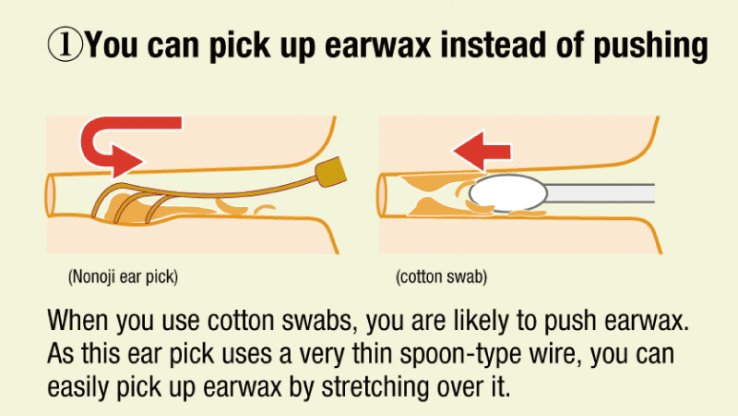
Purchasing mimikaki
Mimikaki can be purchased almost anywhere, from convenience stores to department stores so you should have no trouble finding one if you ask. Due to the interesting varieties available mimikaki are now quite popular as gifts or souvenirs as well. If you want to see the largest variety of mimikaki in one place Tokyu Hands is the place to visit. Tokyu Hands will have the Nonoji varieties of mimikaki that can be seen in the pictures in this article. The Nonoji brand is trusted in Japan and has sold over 3.5 million of the metal mimikaki over the past 10 years.
Recommendations / Testimonials
"The Hello Kitty mimikaki is great quality. I especially love the cap and collapsible design which makes it highly portable. I personally prefer it over Q-tips as it feels very soothing to use and my ears are more thoroughly cleaned."< Taiwan / Female / 20 >
“One thing I really liked about the product was that it is compact and convenient to carry around. I liked the fact that it didn’t look like a mimikaki at all in its compact version. I think young women have incentive to purchase the product as it is fun to use and has cute characters on it as well."< Korea / Female / 23 >
"I’m not used to carrying a mimikaki, but there is no doubt that this product is convenient and relaxing to use. The lid design make this product cleaner than the tradition style. There are many varieties and sizes to choose from so it is possible for anyone to find one that matches their ears."< China / Female / 19 >
Why is Japan so interested in mimikaki, while the western world is relatively unaware? There are dmany reasons, but the easiest way to find out is trying one out for yourself.









